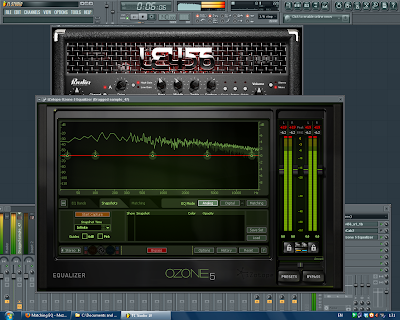Hello, this is me again :)
Let's talk about impulse responses (IR). But I'll give little interlude.
Guitar stack is created with two parts: an amplifier and cabinet speaker. Amplifier creates sound (and creates distortion). But it's not this distortion what we hear. Raw sound contains a lot of hiss above 5-6 khz. Then goes speaker cabinet. It is special guitar speaker, which pulls off bad high frequences.
Let's create virtual stack. Here's an example:
I reviewed these plugins in this article. And it sounds like this:
As we can hear it sounds ok. But let's turn impulse cabinet off and listen:
Sounds bad. A lot of bad high frequences make a huge hiss.
But what about EQ snapshots?
Conclusion:
Cabinet impulse response is short *.wav file which has frequency characeristics of cabinet sound. And IR plugin just analyze impulse file and substrack concrete frequences from signal. And we hear good tone as output signal.
Let's talk about impulse responses (IR). But I'll give little interlude.
Guitar stack is created with two parts: an amplifier and cabinet speaker. Amplifier creates sound (and creates distortion). But it's not this distortion what we hear. Raw sound contains a lot of hiss above 5-6 khz. Then goes speaker cabinet. It is special guitar speaker, which pulls off bad high frequences.
Let's create virtual stack. Here's an example:
I reviewed these plugins in this article. And it sounds like this:
As we can hear it sounds ok. But let's turn impulse cabinet off and listen:
Sounds bad. A lot of bad high frequences make a huge hiss.
But what about EQ snapshots?
 |
| Cabinet is enabled. |
 |
| Cabinet is disabled. |
Cabinet impulse response is short *.wav file which has frequency characeristics of cabinet sound. And IR plugin just analyze impulse file and substrack concrete frequences from signal. And we hear good tone as output signal.










0 comments:
Post a Comment